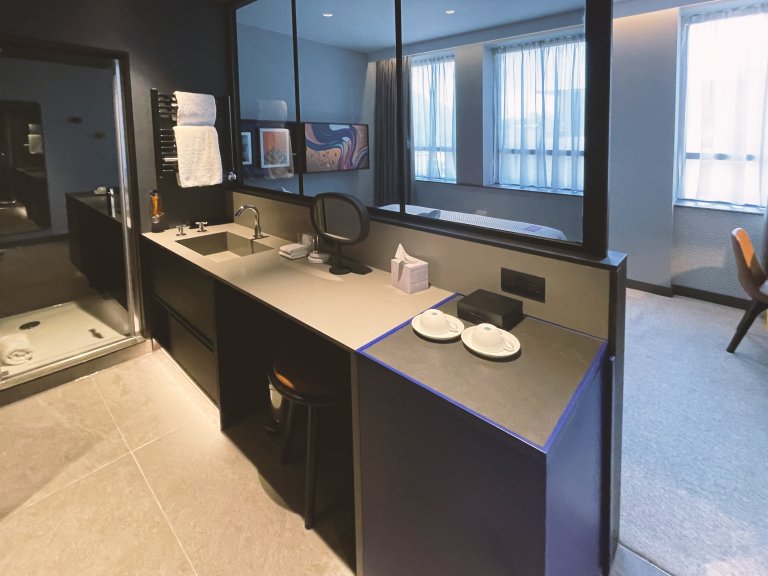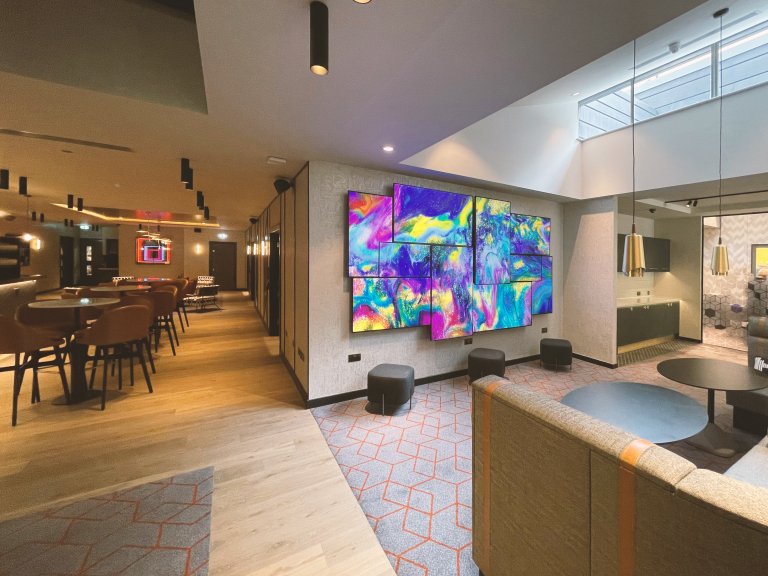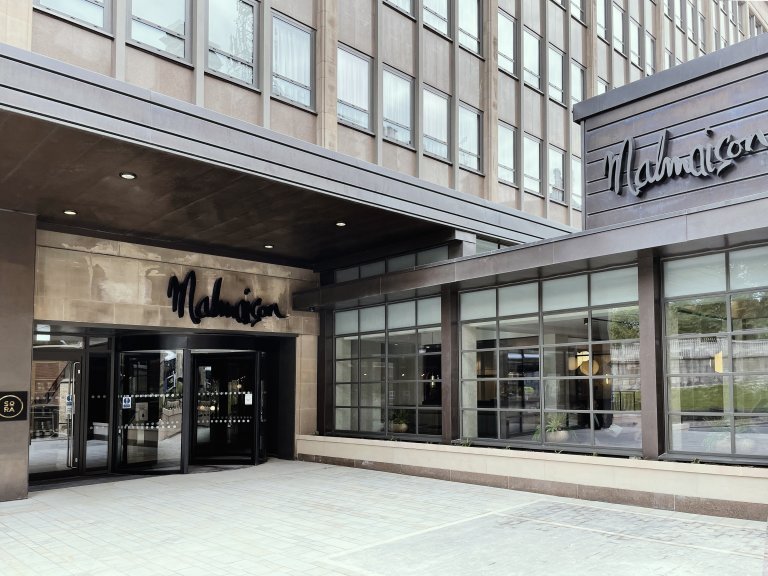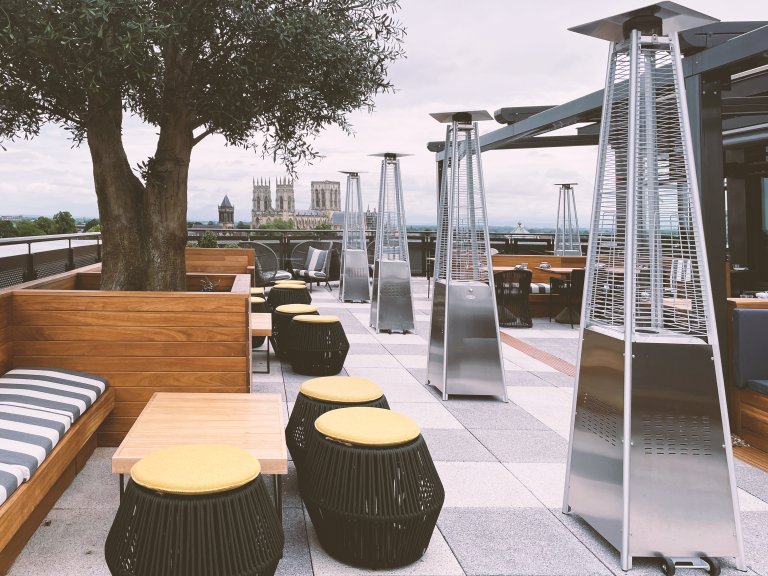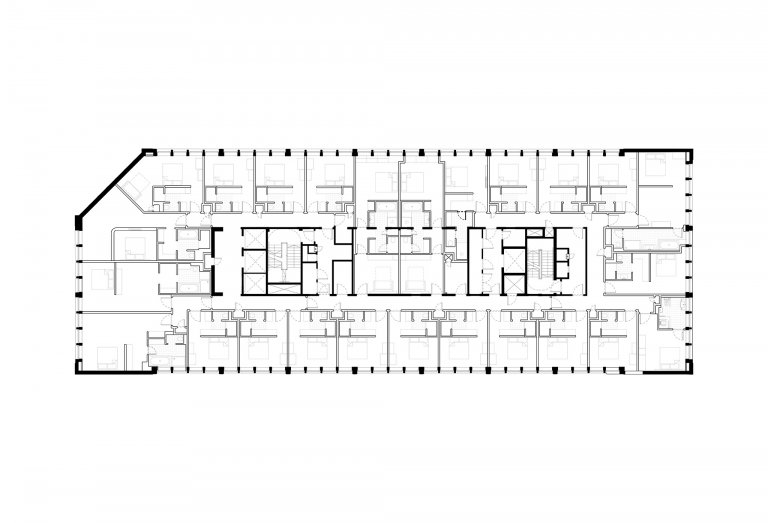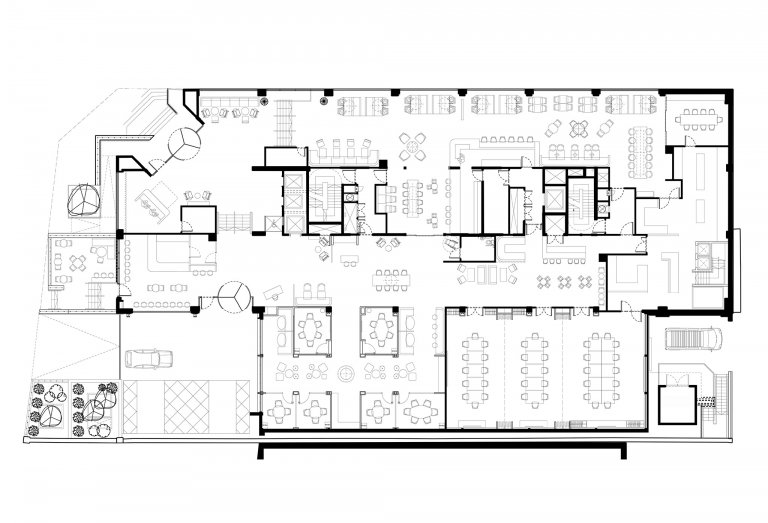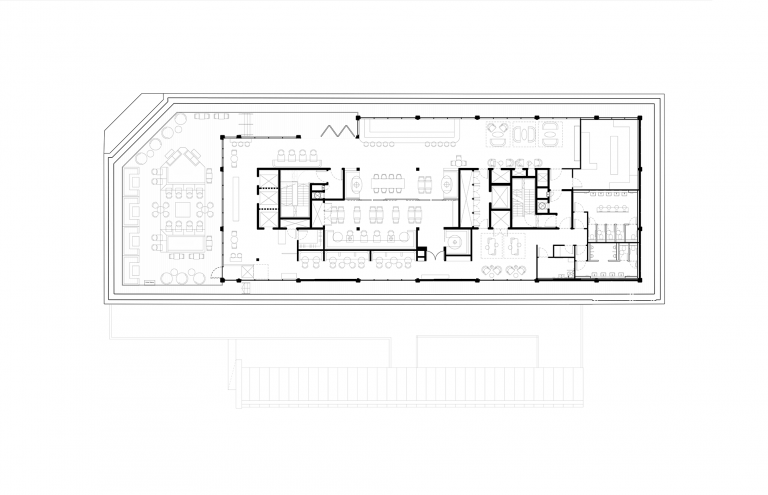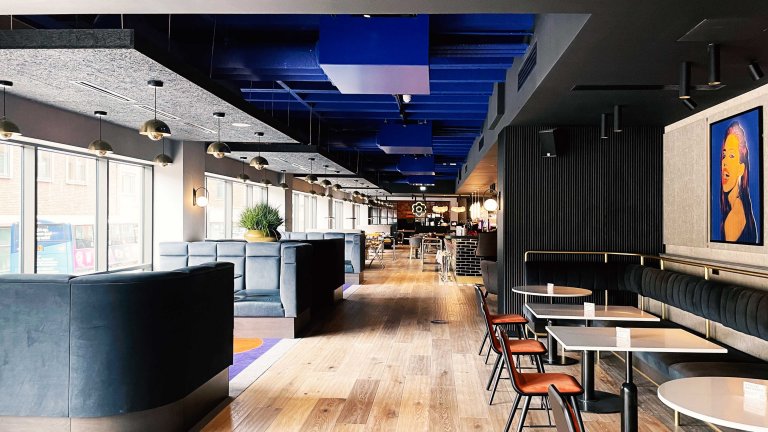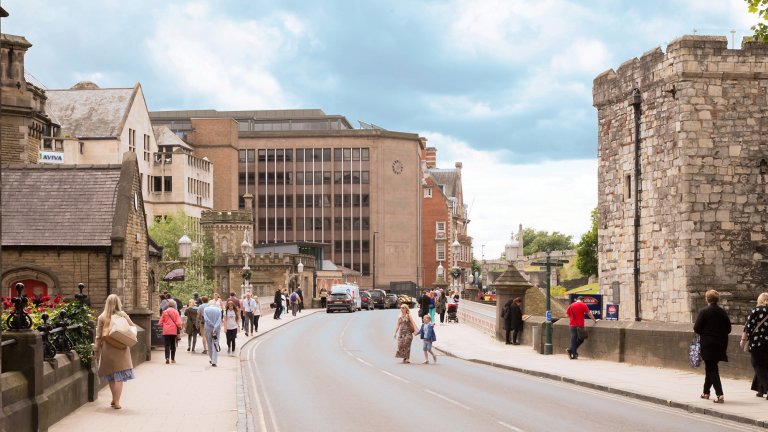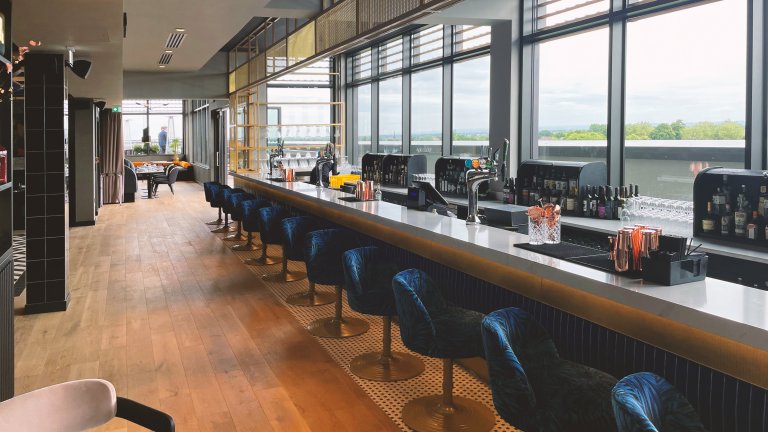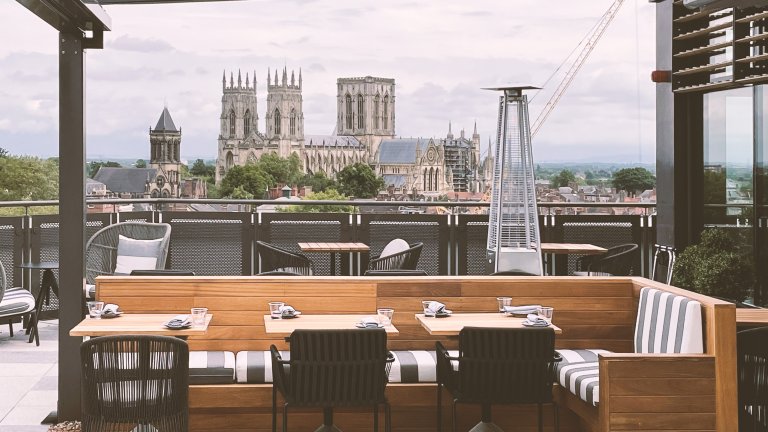Project summary
- Client: Lothbury
- Location: York
- Sector: Hotels
- Size: 29,000 sqft
- Value: Circa £18 million
- Status: Construction
Awards
- Architect's Journal Retrofit AwardsBest Hotel, Retail or Leisure | Finalist | 2022
Story
The iconic Aviva building in central York is has been re-configured to provide a boutique hotel for the Malmaison chain, providing 150 bedrooms, lounges and buisness suites in the city cente.
The completed scheme includes an rooftop skybar extension providing a bar and restaurant space with unparalleled views across the historic city of York. This is being done with minimal structural intervention using lightweight techniques and the careful distribution of services.
At the heart of the design proposals are the Malmaison brand’s Work + Play concept, which fuses traditional hotel design with business-ready technologies to appeal to a growing mobile workforce. Technology is integrated heavily throughout – a challenge in an existing building context – to allow for future evolution of the brand concept or transition to another format.
Team
M&E Engineer: brentwood design partnership + mda
Structures: dudleys
Planning consultant: id planning
Interiors: dexter moren associate
Contractor: northstar
DESIGN & DEVELOPMENT
The building sits in an important heritage context, with views to York Minster and in close proximity to celebrated local buildings and monuments. To that end, a careful approach to the re-use of this building was required to demonstrate it suitability for hotel use, and to maximise its value, both commercial and to the city.
Spatially, much of the proposals’ logic came from the food, beverage and public-facing aspirations of the end-user; spaces were needed throughout the regularised former office which could provide a range of unique and visual identities. The extension at ground floor, treated with a mix of traditional and contemporary facing materials, host the workspace and business suites and crucial additional level access. This element is designed to line-through with the dining pavilion of the adjacent Grade-II Listed Grand Hotel, aligning the two hotels’ public spaces – new and old – at street level.
Throughout, the design approach has been one of respecting the building fabric, mitigating external interruptions to the rhythmic elevations and clearly demarcating new additions where they exist. Through careful space-planning, the hotel floor layouts were developed to work with the facades and maximise the amount and quality of hotel accommodation.
To maximise the roofspace in this key location, a rooftop extension to provide a new skybar was proposed, the design of which was of critical importance to planning. Stepped back from the building’s complex roofline – a notable feature of it’s post-war design – the skybar is a clear and modern addition to the structure.
The existing building envelope, with its notable stone cladding and mullion & transom window surrounds, remain largely unchanged. The curtain walling fenestration has been thermally and acoustically upgraded with no external alterations required.
The ventilation system serving the hotel rooms is centralised and screened above the existing cores thereby avoiding the introduction of individual grilles within the façades which would interrupt the window rhythm. This centralised servicing approach is integrated with the new rooftop Skybar extension, which allows for the concealment of plant at high level.

